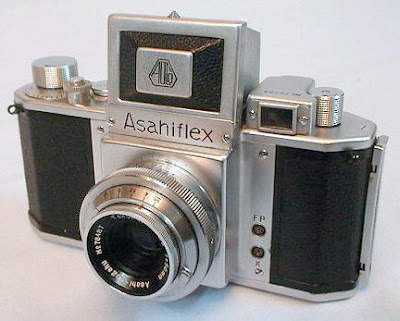- Get link
- Other Apps
- Get link
- Other Apps
The invention of the camera marked an important milestone in the history of human innovation and technology. Through the development of this revolutionary device it became possible to capture and preserve moments in time. The journey of the invention of the camera is a fascinating story of scientific breakthroughs and the relentless quest to capture the world in one frame.
Initial Concepts:
The concept of capturing images dates back to ancient times when the Chinese philosopher Mozi discovered the principle of the camera obscura around the 5th century BC. This optical phenomenon involved projecting an inverted image through a small hole onto a dark surface. However, this was merely an observation without practical applications at the time.
Pinhole Camera from Camera Obscura:
In the 11th century, the Arab scientist Alhazen further discovered the camera obscura and recorded his findings in his book, the "Book of Optics". This work laid the foundation for the understanding of optics and light, which contributed to the eventual development of the camera.
The transition from camera obscura to pinhole camera occurred during the Renaissance. Artists and scientists such as Leonardo da Vinci began using the camera obscura as a tool for drawing and observation. The addition of the lens improved the clarity and quality of projected images.
Daguerreotype and the birth of photography:
The real birth of photography took place in the early 19th century. In 1826, French inventor Joseph Nicephore Niépce created the world's first photograph, titled "View from the Window at Le Grasse." Niépce used a polished pewter plate coated with bitumen of Judea, a light-sensitive material, and a camera obscura to capture the image.
However, it was Louis Daguerre, a French artist and inventor, who revolutionized photography with the introduction of the Daguerreotype in 1839. The daguerreotype process involved exposing a silver-coated copper plate to iodine vapor, creating a light-sensitive surface. After exposure in the camera, the plate was developed using mercury vapor to permanently fix the image.
Development of cameras:
As photography gained popularity, inventors and scientists continued to refine and improve camera technology. The introduction of the Kodak camera by George Eastman in 1888 marked a significant advancement, making photography more accessible to the general public. The Kodak camera was a simple box camera with pre-loaded film, and users could send the entire camera to Kodak for the film to be developed and reloaded.
The 20th century saw the advent of more sophisticated cameras, including the 35 mm film camera and the single-lens reflex (SLR) camera. The transition from film to digital technology in the late 20th century further changed the landscape of photography, making it more convenient and accessible to people around the world.
The invention and development of the camera has been a captivating journey through centuries of scientific discovery and technological innovation. From the early principles of the camera obscura to today's modern digital cameras, photography has become an integral part of human expression, communication, and documentation. The invention of the camera has not only captured moments in time but also shaped the way we view and interact with the world around us.


Comments
Post a Comment